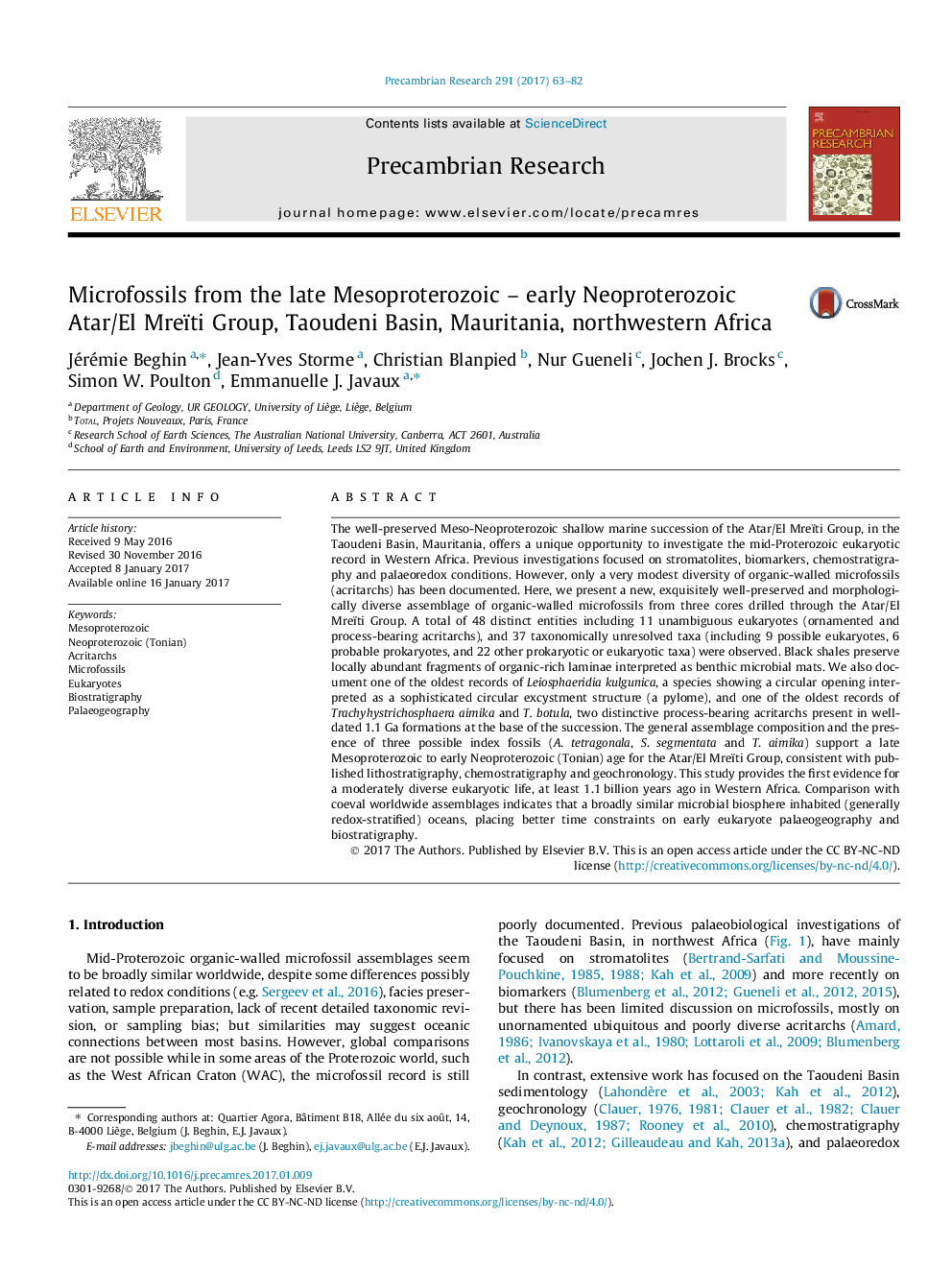| Article ID | Journal | Published Year | Pages | File Type |
|---|---|---|---|---|
| 5784884 | Precambrian Research | 2017 | 20 Pages |
â¢New organic-walled microfossil assemblage in the Atar/El Mreiti Group, Mauritania.â¢Microfossil assemblage in support of late Meso- to early Neoproterozoic (Tonian) age.â¢First record of unambiguous eukaryotes in 1.1 Ga Western Africa.â¢Acanthomorphs (incl. Trachyhystrichopshaera aimika) and the occurrence of a pylome.â¢Biostratigraphic and paleogeographic global expansion of mid-Proterozoic biosphere.
The well-preserved Meso-Neoproterozoic shallow marine succession of the Atar/El Mreïti Group, in the Taoudeni Basin, Mauritania, offers a unique opportunity to investigate the mid-Proterozoic eukaryotic record in Western Africa. Previous investigations focused on stromatolites, biomarkers, chemostratigraphy and palaeoredox conditions. However, only a very modest diversity of organic-walled microfossils (acritarchs) has been documented. Here, we present a new, exquisitely well-preserved and morphologically diverse assemblage of organic-walled microfossils from three cores drilled through the Atar/El Mreïti Group. A total of 48 distinct entities including 11 unambiguous eukaryotes (ornamented and process-bearing acritarchs), and 37 taxonomically unresolved taxa (including 9 possible eukaryotes, 6 probable prokaryotes, and 22 other prokaryotic or eukaryotic taxa) were observed. Black shales preserve locally abundant fragments of organic-rich laminae interpreted as benthic microbial mats. We also document one of the oldest records of Leiosphaeridia kulgunica, a species showing a circular opening interpreted as a sophisticated circular excystment structure (a pylome), and one of the oldest records of Trachyhystrichosphaera aimika and T. botula, two distinctive process-bearing acritarchs present in well-dated 1.1Â Ga formations at the base of the succession. The general assemblage composition and the presence of three possible index fossils (A. tetragonala, S. segmentata and T. aimika) support a late Mesoproterozoic to early Neoproterozoic (Tonian) age for the Atar/El Mreïti Group, consistent with published lithostratigraphy, chemostratigraphy and geochronology. This study provides the first evidence for a moderately diverse eukaryotic life, at least 1.1Â billion years ago in Western Africa. Comparison with coeval worldwide assemblages indicates that a broadly similar microbial biosphere inhabited (generally redox-stratified) oceans, placing better time constraints on early eukaryote palaeogeography and biostratigraphy.
